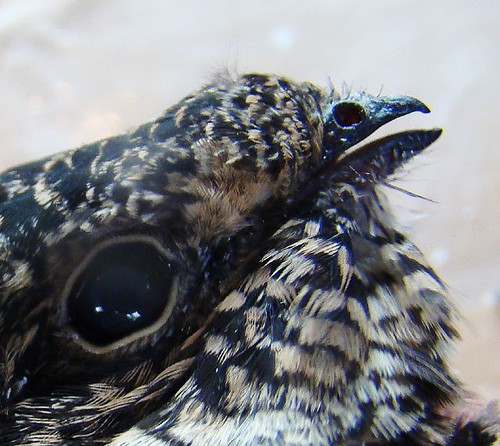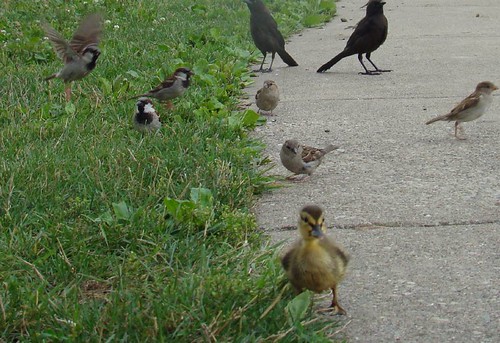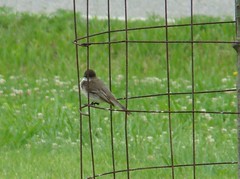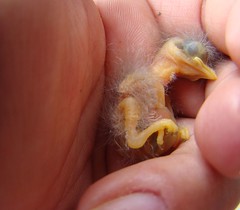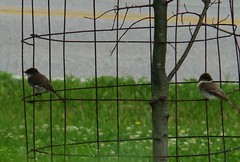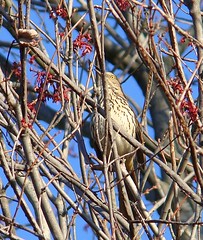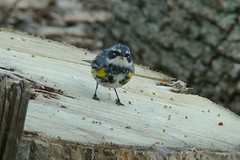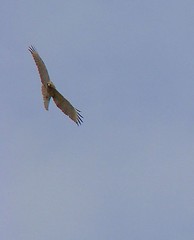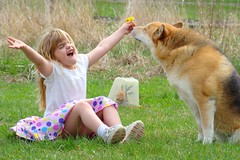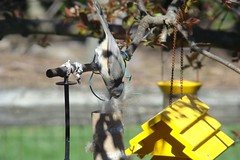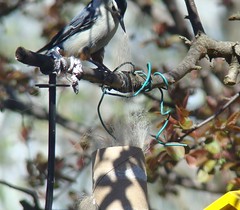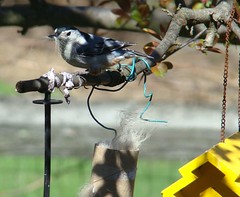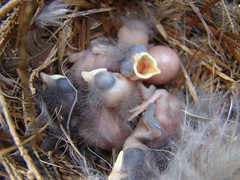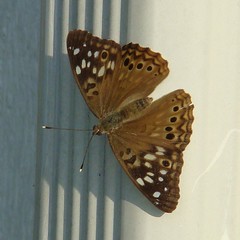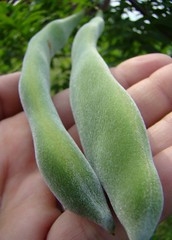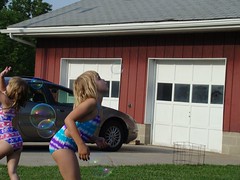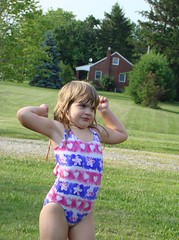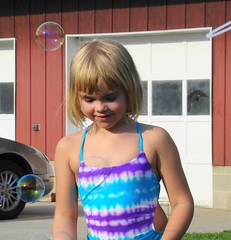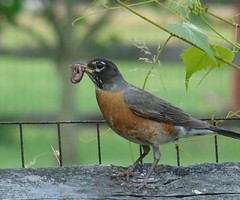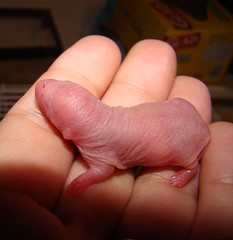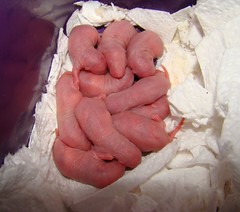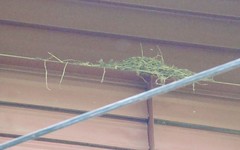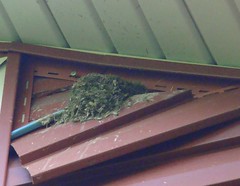I get asked the same question over and over at my education programs.
"What do I do if I find an injured bird/baby bird?"
Thanks to the dudes over at
10,000 Birds for posting this.
If you love birds or nature in general, read this and remember it. And if you have a blog, why not post it, too?
*******************************
Suzie Gilbert is a wildlife rehabilitator in the Hudson Valley of New York State. She is also the author of Flyaway: How a Wild Bird Rehabber Sought Adventure and Found Her Wings
, an excellent read that we reviewed and recommended. To make a long story short, in Flyaway
there are several incidents described in which wild birds were brought to Suzie in worse condition than they might have been, mostly because people did not know what to do with an injured bird. Since we at 10,000 Birds often get inquiries from people asking what to do with an injured bird and none of we three bird bloggers feel qualified enough to give unequivocal answers we figured we could get Suzie to do it, and, much to our delight, she has! So, if you have a lonely nestling, an injured fledgling, or a sick duck you’ve come to the right place! Welcome to Wild Bird Rescue 101!
Being a rehabber myself, I can tell you that we can be hard to find, especially when there’s an emergency and you need someone fast. So here’s a quick primer on what to do if you should find a sick/injured/nestling/fledgling songbird/waterbird/gamebird/raptor.
There are three rules that cover all birds in all circumstances:
- If there are flies involved, the bird needs immediate rescue, even if you don’t see any sign of injury. Leaving a bird in the middle of circling flies will always mean a bad end for him.
- Never attempt to put water down a bird’s throat. You will drown him, or at least fill his lungs with enough water to give him an eventual case of pneumonia. Do not attempt to feed a wild bird unless you have talked to a rehabber.
- Wash your hands after handling wildlife. There’s no need for alarm; it’s just a rule of thumb. A good hand wash with regular soap is all you need.
Here is information for specific situations:
Nestling songbirds: if you find one on the ground, try to find the nest. If you find it, pick up the nestling and put him back, even if this means getting out the big ladder. A nestling’s best chance of survival is with his parents; birds (except for vultures and pigeons) have a poor to non-existent sense of smell, and the parents won’t care if you’ve handled their baby as long as they get him back. If you cannot find the nest but the parents are around, you can make a nest out of a small plastic blueberry basket or margarine tub (poke holes in the bottom so it won’t fill with water during rain), line it with leaves or dry grass, and hang it from a protected branch; keep watching to make sure the parents have resumed care. If the nestling is obviously injured, or has been touched by a cat, you’ll have to find a rehabilitator (see end of article); nestlings need to eat every 20 minutes, so you’ll have to find one quickly. Meanwhile, get a small box. Take a hand towel (or small piece of material), twist and curve it into a donut shape, and place it in the box; take another hand towel and drape it over the donut so it becomes a makeshift nest. Place some Kleenex over the second towel, so it can be easily cleaned if the bird poops, then put the bird in. Put another small towel over the top of the box to conserve heat, because nestlings become chilled easily.
Fledgling songbirds: The fledgling part of a bird’s life is filled with danger. Normally they climb out of the nest, hop from branch to branch, lose their balance, fall down, then climb back up again. The problem is if they encounter humans or domestic pets. If you find a healthy fledgling, odds are the parents are still taking care of him, and are probably watching nearby. If he’s on the ground, pick him up and put him in a leafy bush or the branch of a tree, anything that will provide some protection, and let the parents take over. Keep pets and children out of the area for at least two hours. If you check again in two hours and he is still there, or if he is obviously injured, you’ll need to call a rehabilitator. Fledglings can be temporarily housed in a box or small pet carrier, just put a small towel on the bottom so they can grip. As with all birds, once the bird is in a dark box leave him alone in a quiet place while you find help; stress, as well as injury, can kill a bird.
A word about outdoor cats: other than habitat loss, there is nothing more destructive to wild birds than outdoor cats. If a cat touches a bird, it’s a dead bird. Cats’ teeth and claws are crawling with bacteria, especially pasteurella; even if the bird does not appear injured, any tiny nick will become infected and slowly kill him – unless he is immediately taken to a rehabber and put on antibiotics. If you care about birds, please keep your cats indoors. If you are an indoor cat owner, bless you – you are an environmental hero.
Adult songbirds: for birds who are stunned by a window strike … place the bird in a cardboard box with a hand towel on the bottom, make sure all pets are inside, and put the box in a protected area – under a bush, in a garden, etc. Check the box in a half hour, with any luck the bird will have flown away. In frigid weather, punch airholes in the box, place the bird in, close the lid, bring him inside, and leave the box in a bathroom for a half hour. Open the box to check carefully – the reason you’re in the bathroom is so if the bird recovers and manages to escape, you don’t end up chasing him through your house and having him slam into yet another window, this time from the inside. If he hasn’t recovered, call a rehabber. For all other injuries, place the bird in the same kind of box and call a rehabber.
Young waterbirds: as with songbirds, it is vital to make sure that all young waterbirds really are parentless before removing them from their habitat. Keep watching to make sure that the parents aren’t nearby, trying to avoid drawing attention to their young.
Adult waterbirds: injured adult ducks, geese and gulls can be caught by throwing a towel or blanket over them, then carrying them to a box or a pet carrier. Swans, herons and egrets are difficult birds and I do not recommend trying to catch them … but if you decide to do it anyway … swans are amazingly strong, so be careful. Throw a towel or blanket over the head, then hold the head with one hand and encircle the body with your other arm. Be even more careful with herons and egrets, especially herons, as they may try to strike at your eyes with their beaks. Throw the towel over the bird’s head, then hold the beak with one hand and encircle the body with your other arm. If you are able to get anywhere near a heron or egret it means they are in dire straits, so get him to a rehabber ASAP – but be careful of that beak.
Gamebirds: follow directions for ducks and geese. Be careful of the spurs on the back of adult male turkeys’ legs.
Nestling raptors: Please encourage everyone you know not to cut down trees in the springtime! This leads to all kinds of injured and homeless nestlings, especially cavity-nesters, like woodpeckers and screech owls. Nestling raptors also need a rehabber as soon as possible; they have to eat entire animals or they will develop debilitating and sometimes fatal calcium deficiencies. It is often possible to put a nestling raptor back in its nest; this is tricky, and if you’re dealing with a large raptor dangerous, so it’s best left to the rehabber.
Fledgling and adult raptors: By the time they fledge, raptors are as large or larger than their parents. As with songbirds, the parents continue to feed them and teach them the ropes. Obviously, care should be taken when trying to rescue an injured adult raptor. If possible, use heavy gloves, a blanket, and a cardboard box or pet carrier. Tilt the box on its side and try to push the bird into the box with the blanket. If they are able, raptors tend to flip onto their backs and grab at their rescuer with their feet (believe me, you do not want them to connect); if they grab the blanket, simply lift them up and then lower them into the box. Once the bird is in the box, close the lid or drape the towel or blanket over the top; if it is dark inside, they won’t struggle. By fall, many young raptors are starving; only 80% of them make it through their first year. A raptor sitting on the ground may simply be a young one who hasn’t mastered his hunting skills and is too weak to fly. A rehabilitator can fatten him up and give him another chance.
Crows: Ah, crows. It is tempting to keep a nestling crow for awhile before surrendering him to a rehabber, as they are so smart, personable, and happy to accept your hospitality. But they imprint in a heartbeat, and an imprinted crow has almost no chance of ever joining a flock and living like a crow should live. A rehabber will find potential siblings and eventually release him. By the time crows are fledglings their parents have taught them to be scared to death of humans, so injured fledgling or adult crows should be caught with a towel and placed in a box.
How to find a rehabilitator [This information is intended for those in the United States, though the first and third would apply to everyone. If you have information about finding rehabbers in a country outside the United States please include your information in the comments]:
- Google (Your State) “wildlife rehabilitator” (or “wildlife rehabilitation”). There should be a list. Call around; even if the rehabilitator listed is fairly far from you, they may know someone closer who’s not on the list.
- Go to the National Wildlife Rehabilitators Association Website. On the homepage, click “Need Help?” on the left side, click “Finding a rehabilitator” and go to the third option, Rhonda DeVold’s listings.
- Call your local veterinarian, humane society, animal control officer, or animal protection organization; most local animal people know each other.
It can be wonderfully satisfying to rescue an injured bird and know that you’ve given her another chance at life. Just be careful, and make sure that the bird actually needs to be rescued!






